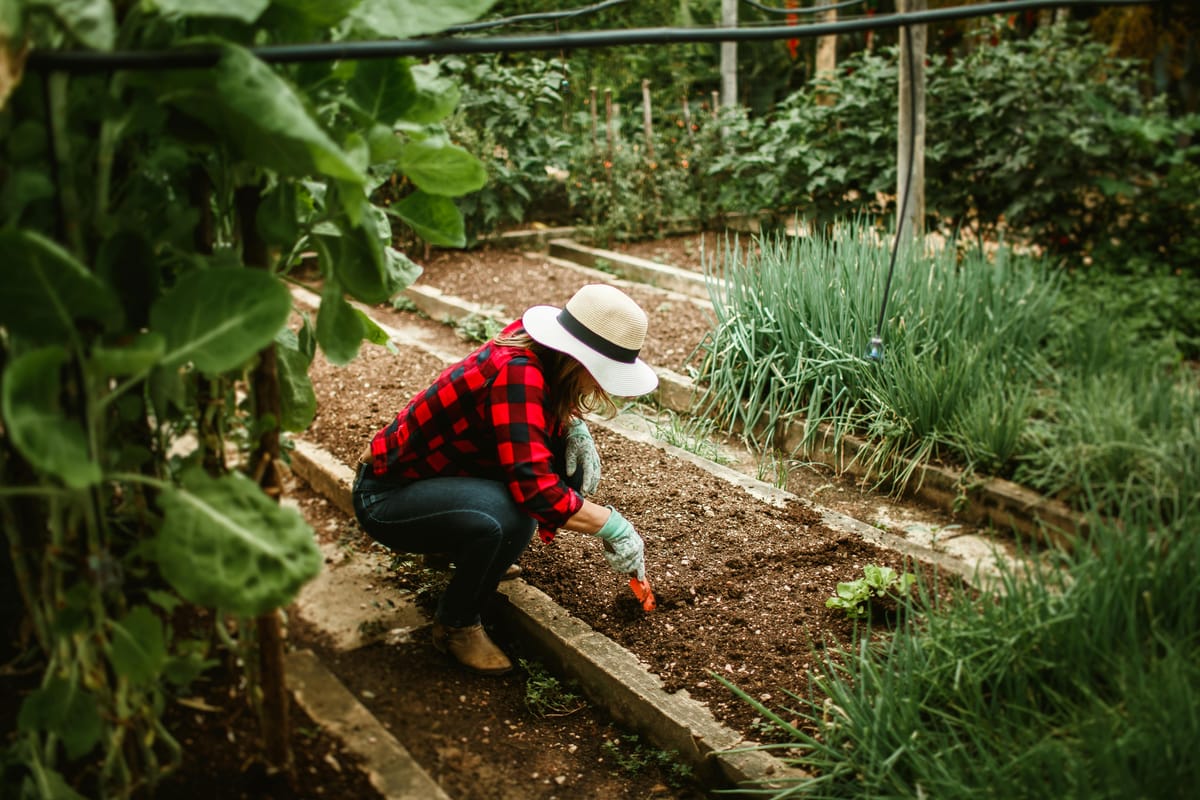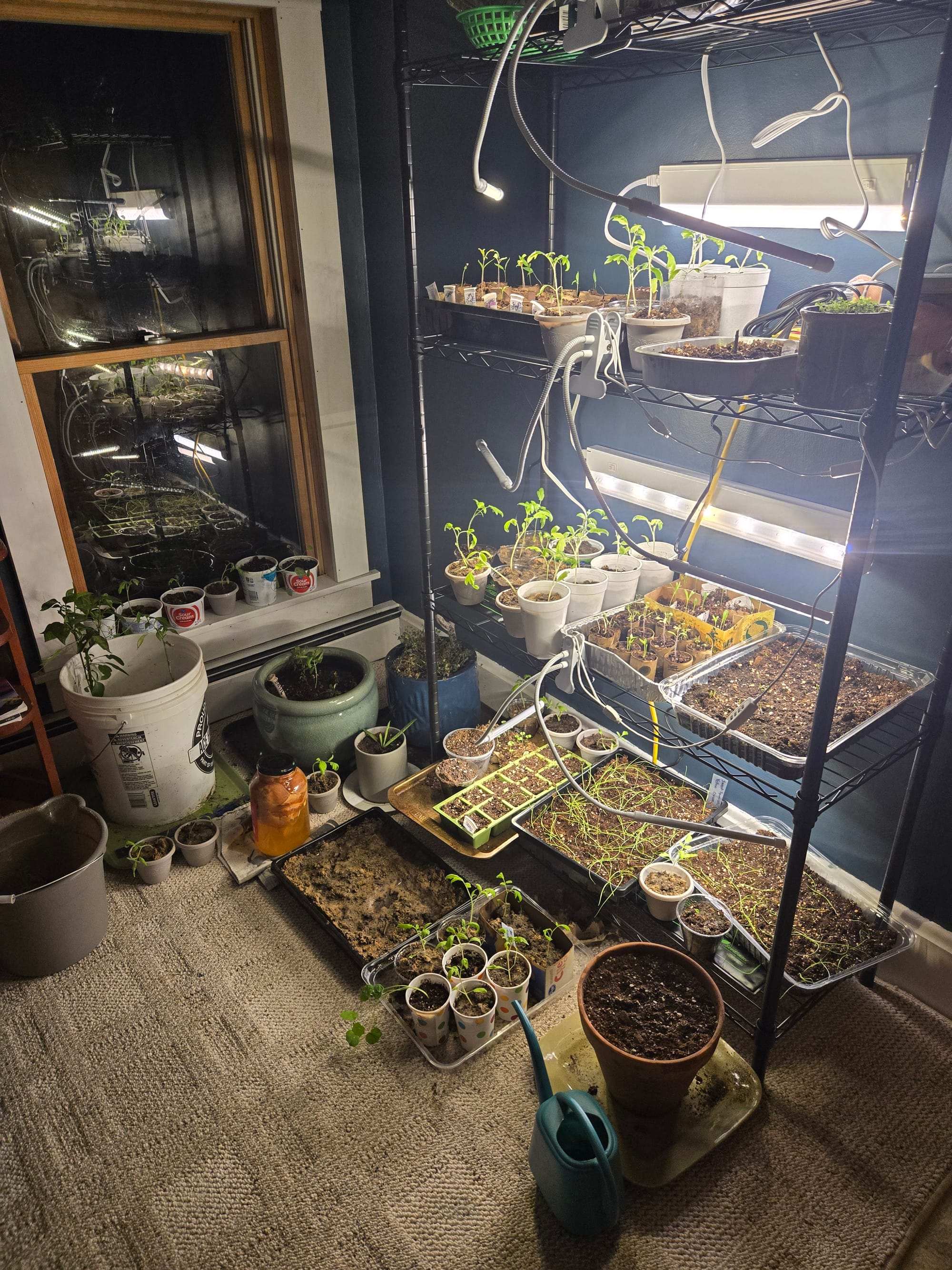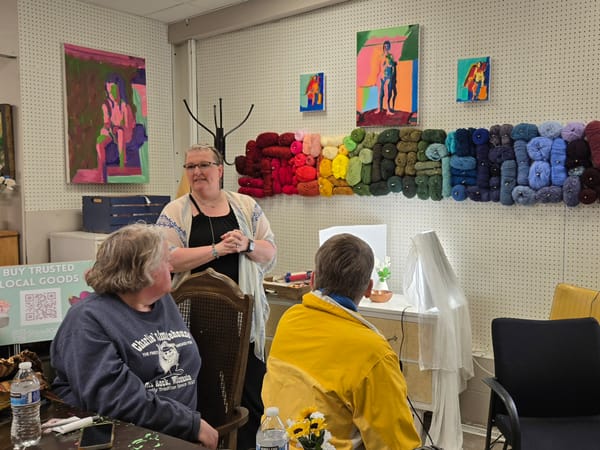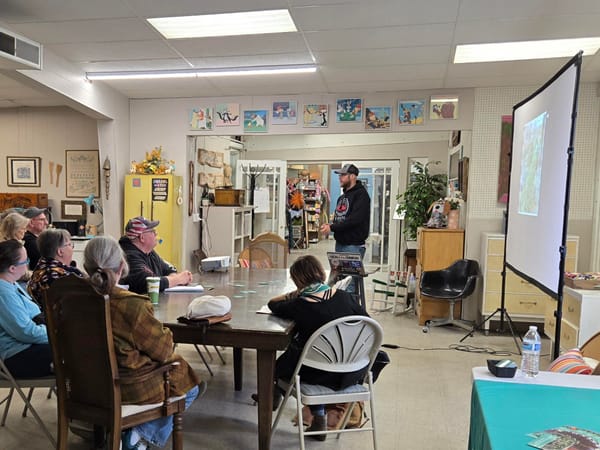Seed Starting Time is Coming!

Seed starting during the late winter months offers a great change from the cold and dreary days outside. The enjoyment you gain watching this years seedlings begin their lives brings much anticipation for the garden to come, and a controlled environment for seeds to germinate helps ensure that your plants are ready to thrive as soon as the weather warms up. Here's a step-by-step guide to get you started:
1. Choose Your Seeds
Select seeds that are well-suited for early planting. Vegetables like tomatoes, peppers, and herbs, as well as flowers such as marigolds and petunias, are excellent choices. Check the seed packet for specific recommendations on indoor sowing times.
2. Gather Your Supplies
You’ll need seed trays, seed-starting mix, labels, and a clear plastic cover or plastic wrap. Seed-starting mixes are specifically formulated to support seed germination and provide a good balance of moisture and air.
3. Prepare the Seed Trays
Fill the seed trays with the seed-starting mix and moisten it thoroughly. Make small indentations in the mix with your finger or a pencil to plant the seeds. Follow the depth recommendations on the seed packet—typically, seeds are planted at a depth of about two to three times their diameter.
4. Plant the Seeds
Place one or two seeds in each indentation and cover lightly with the seed-starting mix. Gently press down to ensure good contact between the seeds and the soil. Label each tray with the seed type and the planting date to keep track of your seedlings.
5. Create a Warm Environment
Most seeds need warmth to germinate. Place the seed trays in a warm location—ideally between 70°F and 75°F (21°C to 24°C). Using a seedling heat mat can help maintain the optimal temperature.
6. Light and Watering
Once the seeds have germinated and sprouts appear, move the trays to a location with bright, indirect light. If natural light is insufficient, use grow lights to provide 12-16 hours of light each day. Keep the soil consistently moist, but avoid over-watering to prevent mold and rot.

7. Transplanting
When the seedlings have developed their first true leaves and are strong enough to handle, it's time to transplant them into larger pots. Once the dangers of frosts are past, harden off the seedlings by gradually exposing them to outdoor conditions for a week or two before planting them in the garden.
Conclusion
By starting your seeds indoors during the winter, you'll give your garden a head start, ensuring robust and healthy plants that will yield bountiful harvests and beautiful blooms come spring and summer. Happy gardening!






